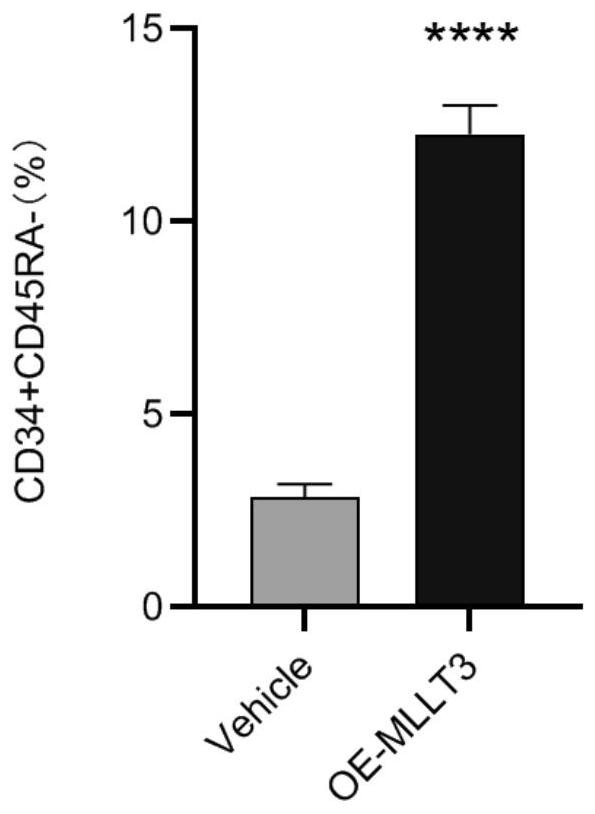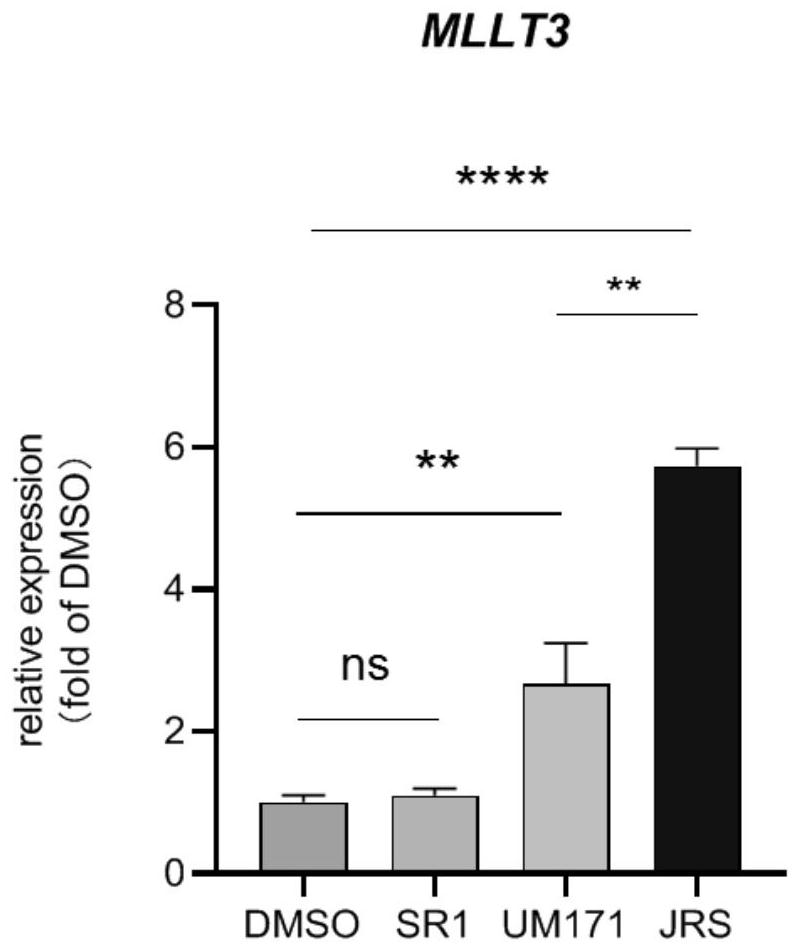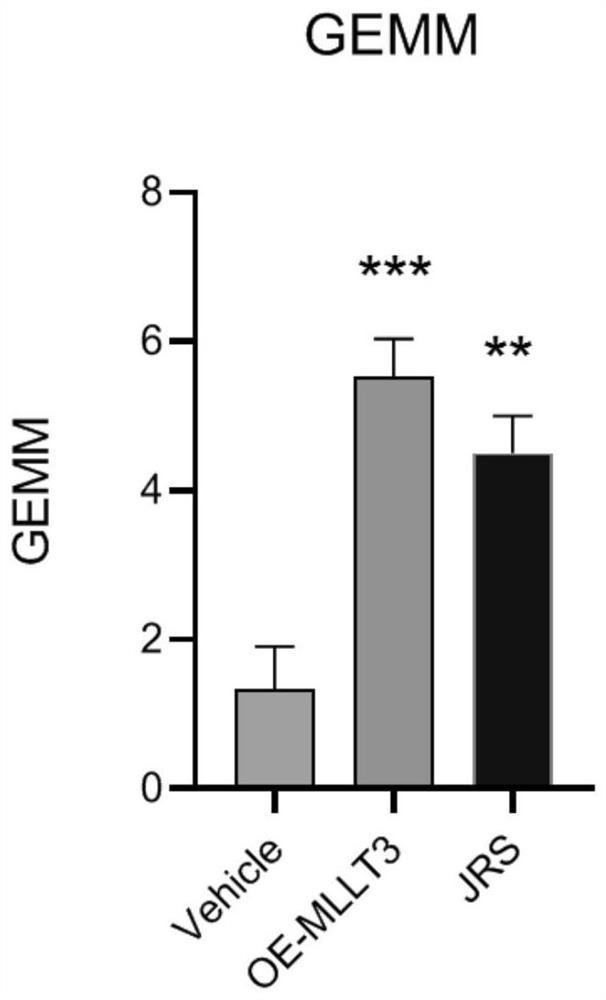Signaling pathway inhibitor for up-regulating MLLT3 gene expression, drug and application of the signaling pathway inhibitor
A signaling pathway and gene expression technology, applied in the field of biomedicine, can solve problems that need to be studied
- Summary
- Abstract
- Description
- Claims
- Application Information
AI Technical Summary
Problems solved by technology
Method used
Image
Examples
Embodiment 1
[0029] CD34 isolated from umbilical cord blood + Hematopoietic stem and progenitor cells integrate the gene fragment cloned with the MLLT3 gene into the genome of the cell through a virus, allowing the MLLT3 gene to be expressed in the cell (OE-MLLT3), and contain SCF (stem cell growth factor), FLT-3 ligand, TPO thrombopoietic factor was cultured in Stemspan series medium for 7 days, and CD34 was detected by flow cytometry + CD45RA - Cell population, found CD34 in OE-MLLT3 experimental group + CD45RA - The proportion of the cell population was much higher than that of the control group, which was nearly 4 times that of the control group, indicating that MLLT3 had a positive effect on the maintenance and proliferation of hematopoietic stem cells in vitro.
Embodiment 2
[0031] CD34 isolated from umbilical cord blood + For hematopoietic stem and progenitor cells, DMSO (negative control group), SR1 (reported to be able to expand HSC), UM171 (reported to be able to amplify HSC) and JRS (containing JNK-IN-8, Rapamycin, SR1) small molecules were cultured for 7 days respectively, and the expression of MLLT3 in each group of cells was detected by qPCR technology.
[0032] Test results such as figure 2 As shown, the expression of MLLT3 in cells treated with UM171 and JRS was significantly increased compared with the control group, and JRS had a better effect than UM171 alone. However, SR1 alone had no significant effect on the expression of MLLT3 gene.
Embodiment 3
[0034] CD34 isolated from umbilical cord blood + Hematopoietic stem and progenitor cells were cultured for 7 days in the control group (Vehicle), MLLT3 overexpression group (OE-MLLT3) and experimental group JRS (medium containing JNK-IN-8, Rapamycin, and SR1 small molecules), and inoculated in the culture medium containing In the semi-solid medium of hemimethylcellulose, the number of GEMM colonies formed was observed under a microscope after 14 days.
[0035] Count results as image 3 As shown, the number of GEMM clones formed in the OE-MLLT3 and JRS experimental groups was significantly better than that in the control group.
[0036] Cells cultured for 7 days were inoculated in hemimethylcellulose semi-solid medium, and GEMM clones were observed under a microscope after 14 days, as shown in Figure 4 shown.
PUM
 Login to View More
Login to View More Abstract
Description
Claims
Application Information
 Login to View More
Login to View More - R&D Engineer
- R&D Manager
- IP Professional
- Industry Leading Data Capabilities
- Powerful AI technology
- Patent DNA Extraction
Browse by: Latest US Patents, China's latest patents, Technical Efficacy Thesaurus, Application Domain, Technology Topic, Popular Technical Reports.
© 2024 PatSnap. All rights reserved.Legal|Privacy policy|Modern Slavery Act Transparency Statement|Sitemap|About US| Contact US: help@patsnap.com










